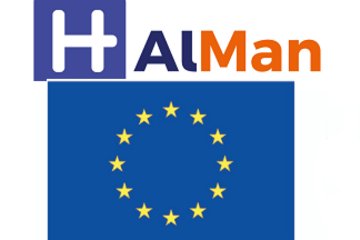All genres
161.
Journal Article
Electrochemical reactions of metal surfaces, covered by thin condensed electrolyte layers. Bulletin of Electrochemistry 8, p. 30 - 30 (1992)
162.
Journal Article
Monitoring of blistering of organic coatings by a contact-free measurement. Werkstoffe und Korrosion 43, 6, pp. 316 - 320 (1992)
163.
Journal Article
The structure and reactivity of chemically modified reactive metal surfaces. Bulletin of Electrochemistry 8, p. 8 - 8 (1992)
164.
Journal Article
A Surface Analytical and an Electrochemical Study of Iron Surfaces Modified by Thiols. Applied Surface Science 55, 1, pp. 19 - 35 (1992)
165.
Journal Article
Adsorption of simple S-organic compounds on iron surfaces prepared in an UHV-system. Fresenius' Journal of Analytical Chemistry 341 (5-6), pp. 406 - 407 (1991)
166.
Journal Article
Structure and stability of silane modified metal surfaces. Fresenius' Journal of Analytical Chemistry 341 (5-6), pp. 337 - 338 (1991)
167.
Journal Article
Neue Erkenntnisse zum Korrosionsschutz von organischen Beschichtungen auf Eisen. Werkstoffe und Korrosion 42, 4, pp. 187 - 195 (1991)
168.
Journal Article
Die Bedeutung von Rostschichten für den Ablauf von Korrosionsreaktionen bei niedrig legierten Stählen. Werkstoffe und Korrosion 42, 9, pp. 467 - 472 (1991)
169.
Journal Article
A new technique able to measure directly the delamination of organic polymer films. Corrosion Science 32 (4), 4, pp. 467 - 470 (1991)
170.
Journal Article
Ein neues Verfahren zur Untersuchung der Delamination von Polymerbeschichtungen. Farbe und Lack 97, pp. 9 - 13 (1991)
171.
Journal Article
The Investigation of the Corrosion Properties of Metal Surfaces Covered by thin Electrolyte Layers. La Metallurgia Italiana 83, pp. 665 - 670 (1991)
172.
Journal Article
Use of a Scanning-Kelvinprobe in the Investigation of Electrochemical Reactions at the Metal/Polymer Interface. Berichte Bunsengesellschaft Physikalische Chemie 95, 11, pp. 1365 - 1375 (1991)
173.
Journal Article
Anbindungsverhalten organischer Monomere auf Eisenoberflächen und Korrosion der durch die Anbindung chemisch modifizierten Oberflächen. Werkstoffe und Korrosion 42 (1), pp. 19 - 34 (1991)
174.
Journal Article
Surface Analytical Investigation on Metal Surfaces, Modified by LB Films of Silanes. Applied Surface Science 47, 1, pp. 49 - 62 (1991)
175.
Journal Article
Application of Kelvin Microprobe to the Corrosion of Metals in Humid Atmospheres. Journal Electrochemical Society 138, 1, pp. 55 - 61 (1991)
176.
Journal Article
Electrochemical study of the corrosion of polymer coated iron. Steel Research 61 (10), pp. 482 - 489 (1990)
177.
Journal Article
Physical and Chemical - Test Methods. Stahl und Eisen 110, 8, pp. 153 - 162 (1990)
178.
Journal Article
Physikalische und chemische Untersuchungsverfahren. Stahl und Eisen 110, pp. 153 - 162 (1990)
179.
Journal Article
The Atmospheric Corrosion of Iron - A Discussion of the Physico-Chemical Fundamentals of this Omnipresent Corrosion Process. Berichte Bunsengesellschaft Physikalische Chemie 94 (6), pp. 626 - 639 (1990)
180.
Journal Article
Chemically Modified Metal Surfaces - A New Class of Composite Materials? Advanced Materials 2 (4), pp. 191 - 195 (1990)











